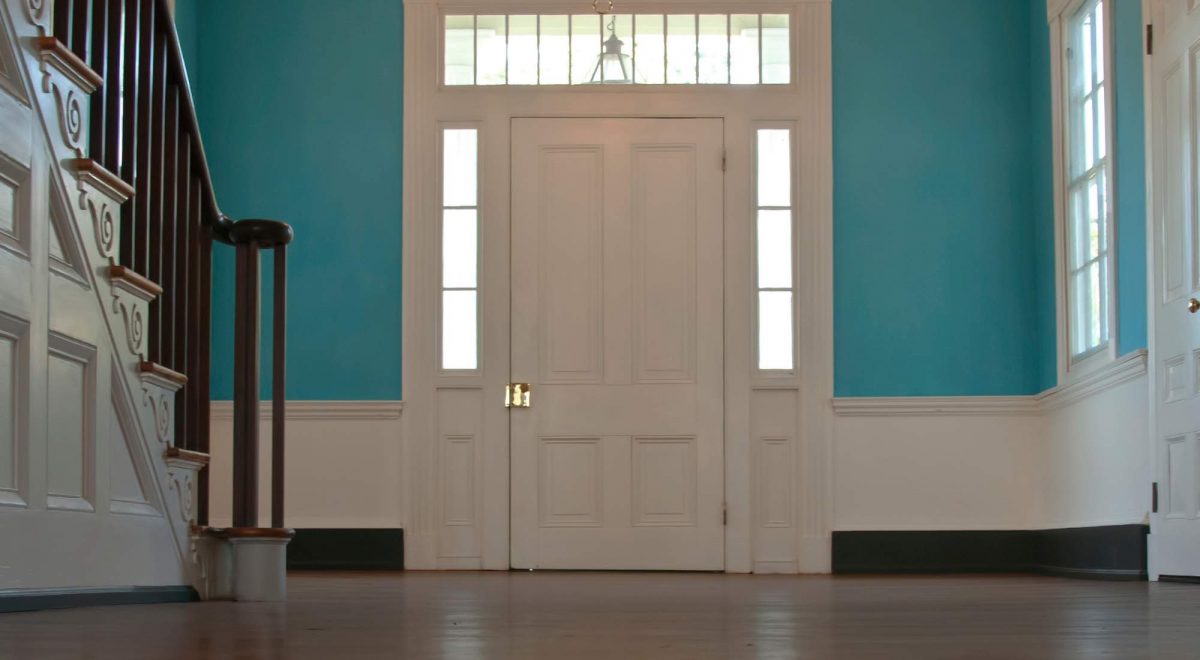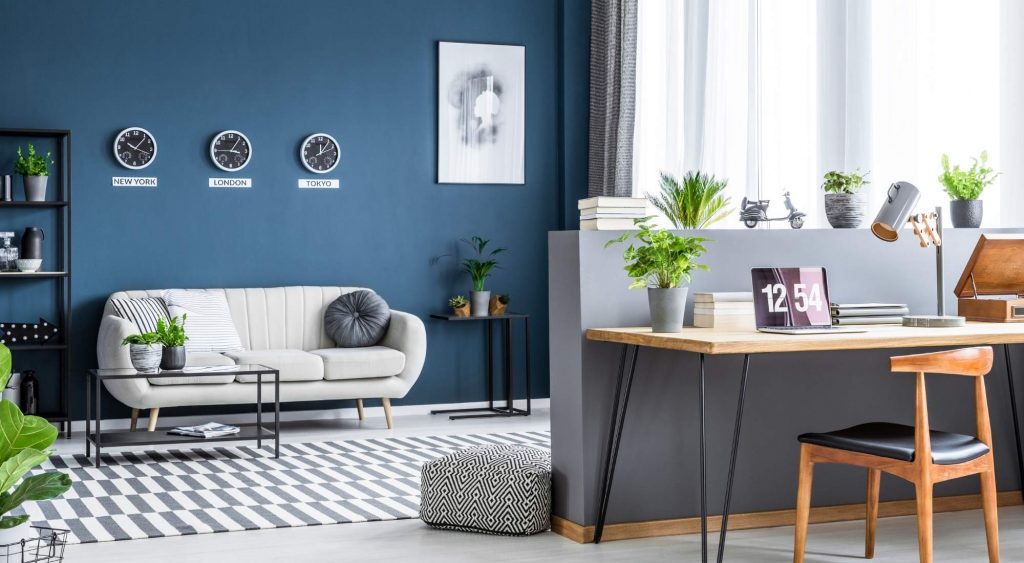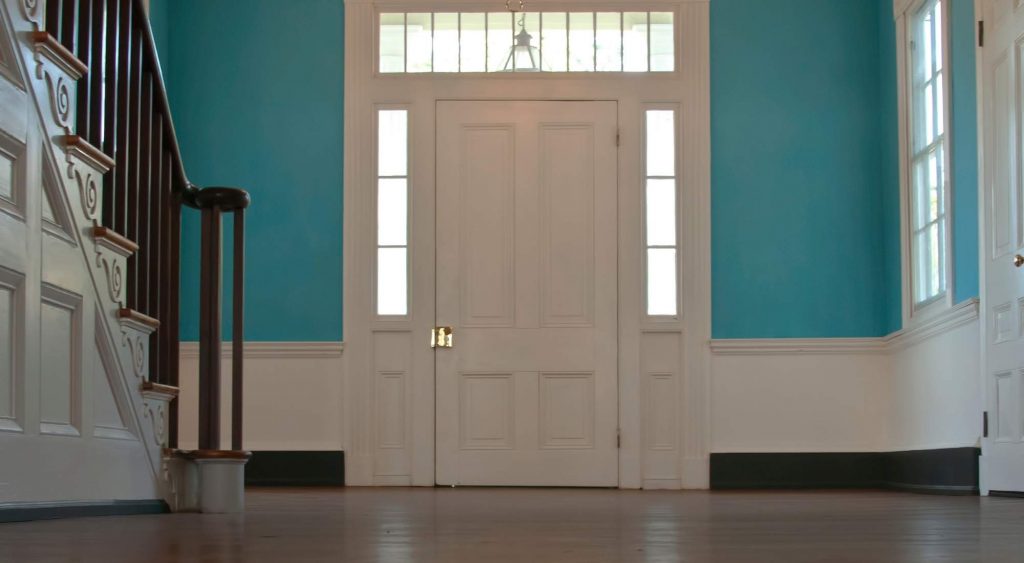Owning a historic home comes with its own unique set of interior design challenges.
How do you marry the old and the new in a tasteful, timeless way?
Paint is one of those styling details that can make or break a room. It sets the tone of the room and can either anchor or blend the space cohesively.
But how do you narrow down your options and ultimately pull the trigger on a historic color palette for your home?
By the end of this guide, you’ll feel confident about how to choose the best option from recommended historic home interior paint colors.
Table of Contents
- What Is Your Goal When Choosing Paint Colors for Your Historic Home?
- Why Neutrals Don’t Work for Historic Home Interior Paint Colors When Trying to Maintain a ‘Historic’ Feel
- Common Historic Home Colors
- Historic Color Palettes by the Type of Historic Home
- Review Historic Paint Color Schemes and Choose the Right One for Your Home With A1 Paint Removal, Painting & Restoration
What Is Your Goal When Choosing Paint Colors for Your Historic Home?
Before choosing historic house paint colors, you have to decide what your goal is.
Are you looking to modernize the feel of your home? Maybe you’re leaning towards maintaining or bringing back the “historic” look or feel of the home.
Knowing your end vision can help steer you to the right historic color palette and give you the confidence to make a decision.
Whatever your ultimate goal, you’ll want to …
- Invest in a quality paint
- Play off of the existing architectural elements
- Keep trim and door colors in mind; and
- Try out different swatches
… to help you choose the best interior paint color for your historic home.
Why Neutrals Don’t Work for Historic Home Interior Paint Colors When Trying to Maintain a ‘Historic’ Feel
Grays and whites are trendy and common in newly built homes, but they often just don’t feel right in historic homes.
Why is that?
Features that historic homes often have, including architectural and woodwork details lend themselves to a different type of warmth and coziness than newer homes typically do.
Preserving that warmth while trying to update the home with a more “trendy” paint color can get tricky.
If you’re aiming to keep the original feel of your historic home, sticking to more traditional or muted colors found in historic homes will likely give you the look you’re after.
You Can Find a ‘Middle-Ground’ With Muted Versions of Historic Colors
Sticking to a traditional color family or opting for muted or lighter tones of classic colors found in historic homes is a safer bet if your goal is to preserve the history and character of your home.
This is especially true when it comes to neutrals.
Instead of grays, beiges, and creams, think about lighter shades of richer tones that are common in historic homes, like:
- Yellows
- Mints
- Navy
- Reds
- Light blues
Or, opt for shades of blue or green that blend with a bit of gray or beige to play off of the classic colors with a bit of a more modern edge if your decor steers that direction.
Common Historic Home Colors
It can be tempting to lean towards using an interior paint color as a way to update your historic home.
But, before you head to the hardware store for some samples, hear us out.
More neutral, trendy tones won’t play off the existing architectural and wood elements that are likely found in your home the same way a more common historic home color would.
But don’t stress if you are struggling with making this decision on your own.
Need a second opinion? Or just someone to outright give you a list of interior paint options?
A1 Paint Removal, Painting & Restoration can help you choose the best historic home colors (and finishes) for you to choose from.

Yellows
While tried and true, yellows can be a difficult color to get right in a historic home. Too yellow and it’s too bright, not yellow enough and it comes a washed out neutral.
It’s best to stay away from pairing a yellow interior paint color with a room with dark wood features, as this combo can look dated very easily.
Stick to mustard undertones and pair with a white trim for a balanced look.
Mints
Mint is a great shade to feature if you have a Mid-Century modern home or even a Victorian or ranch-style home.
Because it compliments both a painted trim and a stained trim, it can work well in a number of different styles and levels of historic homes.
Consider a mint shade for your historic home’s:
- Kitchen
- Master bedroom; or
- Sitting room
But, be sure to select a shade that is more rich in blue than green or yellow. A true mint will pair beautifully with metallic or brass accents and classic white trims.
Navys
Navy is (strangely) about as neutral of a classic historic color as you can get.
It provides the perfect complimentary backdrop for statement antiques or wall hangings and can also steal the show in a room with the right natural lighting.
It’s also a color that has been more common in newer homes. A deep navy with black undertones will perfectly marry the old and new for homeowners who are looking to somewhat update their historic home.
Navy colors complement both darker wood features and trim but also play well off of white trims, making it an easy fit for classic libraries or studies but also family rooms or a statement powder room.
Reds
This might be the first color that pops into mind when you think of a historic home. It’s often picked as a common exterior paint color, too.
Shades of red paint often give off an earthy, or regal feel which complements the elegant look of a historic home.
Perfect against stone features like fireplaces or to give guests a warm welcome, consider using shades of red for a living room or den.
Don’t forget about reds as an option for your trims either — think about front door or even window trims for a grounding pop of color.
Light Blues
Years ago, homeowners in the Deep South would paint their porch ceilings a specific shade of soft blue-green, dubbed Haint Blue, to ward off evil spirits, or “haints.”
Apartment Therapy says, “It’s especially common in the historic homes around Savannah, Georgia, and Charleston, South Carolina. Although ghosts and goblins might not be front-of-mind for modern homeowners, many continue the tradition of blue porch ceilings to keep ties to their home’s Southern roots.”
But, blue porches are still found in cities like Boston and Philadelphia, where historic Victorian homes are prevalent.
So, whether you’re looking to sleep a little easier at night or are considering a light blue shade for your interior, this color choice is common and a staple for historic homes.
Because it works with both light and dark trims and does wonders making a small room feel bigger and brighter, it’s a popular choice for many historic homeowners.
You might consider a light blue with:
- Soft gray undertones for an exterior paint color
- Indigo undertones to open up smaller rooms; or
- Pure blue undertones for a more traditional feel
Historic Color Palettes by the Type of Historic Home
As you’re considering the right historic color palette, consider the type of home you have and refer to this quick list to help you narrow down the options that will best compliment your style of home.
If you have a:
- Historic Victorian: Opt for multiple layers of bright colors and tones to play off of the dark wood features that are likely prominent in your home.
- Historic Craftsman: Stick with warmer tones to enhance the existing hues found in your home. Create a look that is inviting by leaning into the warm wood tones found in your Craftsman.
- Historic Spanish-style: Deep and rich colors are your friend to enhance the architectural features of your home. Compliment them with warm neutrals for a winning combination.
- Historic Mid-Century: Go for bold…with intention. Too much contrast and you’ll teeter into retro, but balance your color with neutrals and your Mid-Century will shine.
- Historic Colonial: Muted tones and colors in monochromatic shades will flatter your home most. Think two to three colors in the same family to highlight the telltale features of your Colonial-revival home.
Review Historic Paint Color Schemes and Choose the Right One for Your Home With A1 Paint Removal, Painting & Restoration
Family-owned and operated since 1995, the professionals at A1 Paint Removal, Painting & Restoration can:
- Help you select colors
- Help you choose the right finish; and
- Take your timeline and accessibility into account
Our team will consult you before every step of the process from prepping to painting to finishing, making sure everything is completed with your needs and desires in mind.
Contact us to get a free estimate for your historic home’s interior or exterior paint needs.






